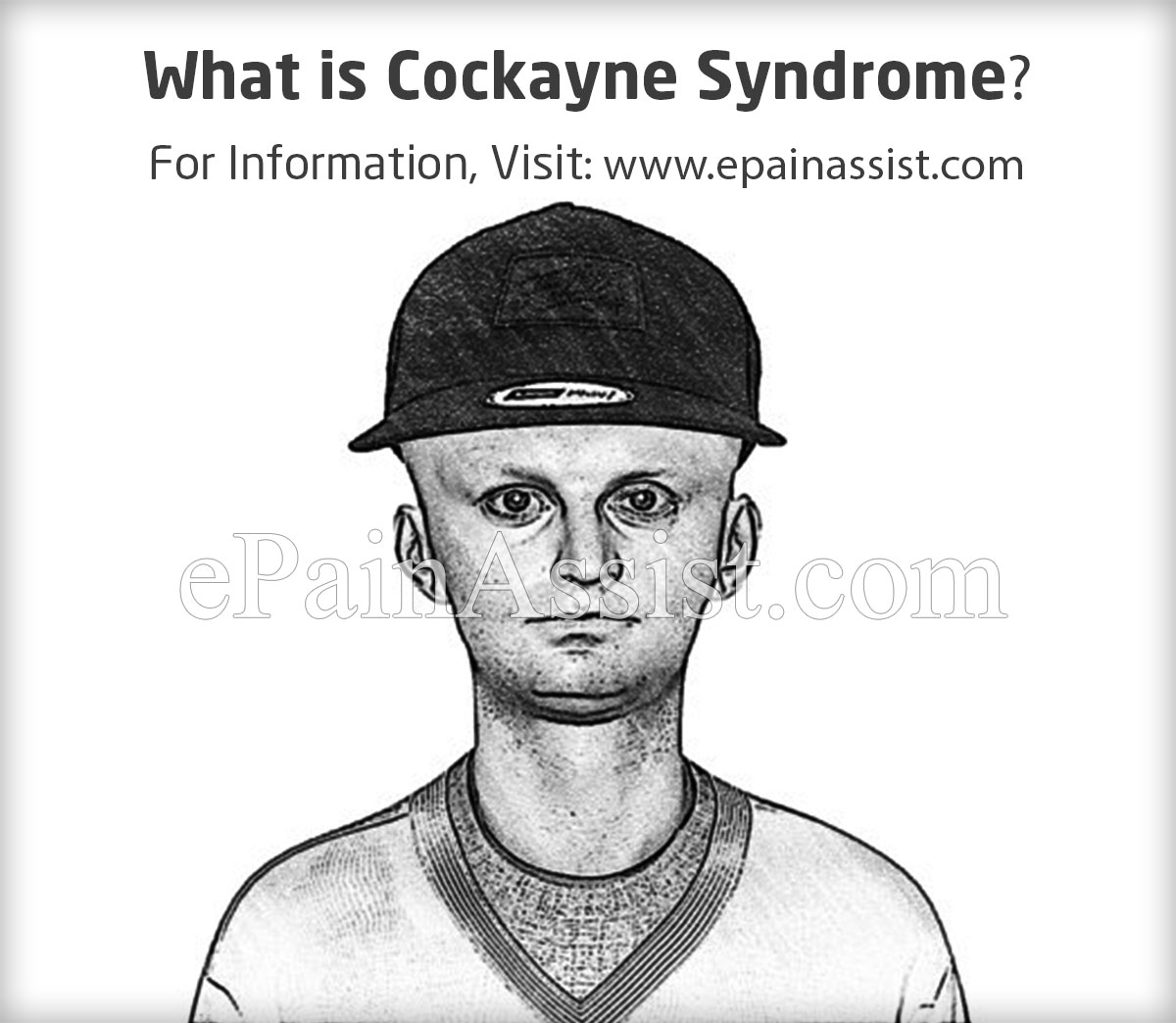What is Cockayne Syndrome?
Cockayne Syndrome is an extremely rare disease found in babies where there is impairment of the nervous system along with various other symptoms like microcephaly meaning smaller than normal heads and the babies look more aged than normal. Babies with Cockayne Syndrome are extremely sensitive to sunlight and tend to develop sunburns even to little exposure to sunlight. Cockayne Syndrome can affect almost any vital organ of the body.
Cockayne Syndrome comes under the family of leukodystrophy and is caused by mutations in gene CSA or the CSB gene. These genes are responsible for repair of DNA which may get damaged due to toxins, excessive sunlight exposure, and chemicals. This DNA damage needs to be repaired emergently and the proteins that the genes CSA and CSB produce does exactly that but in cases of Cockayne Syndrome there is mutations in these genes resulting in the damaged DNA not be able to be repaired resulting in cell death.

There are three types of Cockayne Syndrome, Type I, Type II, and Type III.
- Type I is the classic form of Cockayne Syndrome. The symptoms of this type of condition start to become apparent by the time the child is about one year of age or just above. It becomes quite obvious by the time the child reaches second year that he or she is smaller than normal and is developmentally delayed. From thereon there is gradual deterioration of neurological, visual, and hearing dysfunction and ultimately the child succumbs to the condition by the time he or she enters the second decade of his or her life.
- Type II Cockayne Syndrome is the most severe form of this disorder and can be observed right at the birth of the child. Children with this form of Cockayne Syndrome will have spine and joint contractures leading to severe deformities. Children with this type of Cockayne Syndrome usually succumb to this disorder by seven years of age.
- Type III Cockayne Syndrome is the mildest form of this disorder and its symptoms are apparent much later in life.
What Causes Cockayne Syndrome?
As stated above, the main cause of Cockayne Syndrome is mutation in gene CSA or CSB which are responsible for DNA repair which can be damaged due to a variety of factors including sunlight exposure, various toxins, exposure to various chemicals among others. Due to mutation in these genes the DNA is not able to be repaired resulting in severe cell damage and ultimately death of the cells resulting in various symptoms including extreme photosensitivity and a premature aged appearance.
Cockayne Syndrome is an autosomal recessive trait which means that one copy of the defective gene should be inherited from each parent for the child to get Cockayne Syndrome.
What are the Symptoms of Cockayne Syndrome?
The classic symptom of Cockayne Syndrome is the presence of microcephaly which will be apparent at birth itself. This will be followed by the inability of the child to grow normally and unable to meet the developmental milestones. The child will also have a very short stature. The symptoms will be apparent right from the birth of the child and will tend to worsen with time. Photosensitivity is also one of the common symptom of Cockayne Syndrome. Children with this disorder will not be able to tolerate even minimal sunlight and may get blisters. Some of the other symptoms of Cockayne Syndrome are hearing loss, vision impairment, tooth decay, bone abnormalities, constant coolness of the upper and lower extremities.
How is Cockayne Syndrome Diagnosed?
Cockayne Syndrome is quite apparent right from the birth of the child with an abnormally small head circumference and other characteristics which may point to the condition. In order to confirm the diagnosis of Cockayne Syndrome, the doctor may perform a genetic testing looking for mutation of the CSA or CSB gene which will potentially confirm the diagnosis of Cockayne Syndrome.
How is Cockayne Syndrome Treated?
There is no permanent cure for Cockayne Syndrome and symptoms are aimed at minimizing complications and making the life of the child as comfortable as possible.
- Physical therapy is quite helpful in coping up with joint stiffness by loosening up the joints, correct any posture difficulties, and loosen up any tight muscles
- Medications may be prescribed for treating muscle spasms and tremors associated with Cockayne Syndrome.
- The learning disability caused due to this disorder may be somewhat corrected with speech therapy to an extent that the child may be able to speak up a few words and make his or her thoughts clear to his or her parents to caregivers.
- Sunscreens are essential for children with Cockayne Syndrome to prevent any sunburns or blisters from developing due to any sort of exposure to sunlight
- Vision and hearing problems may be treated with hearing and vision aids
In order to detect any worsening of the condition of the child due to Cockayne Syndrome, it is essential for the child to be taken to the hospital for regular checkups and screenings at least once every six months if not less, as Cockayne Syndrome is a progressive disorder and complications may arise any time.
What is the Prognosis of Cockayne Syndrome?
The prognosis for children with Cockayne Syndrome is extremely poor and in majority of cases, by the age of 10 years children succumb to Cockayne Syndrome.
